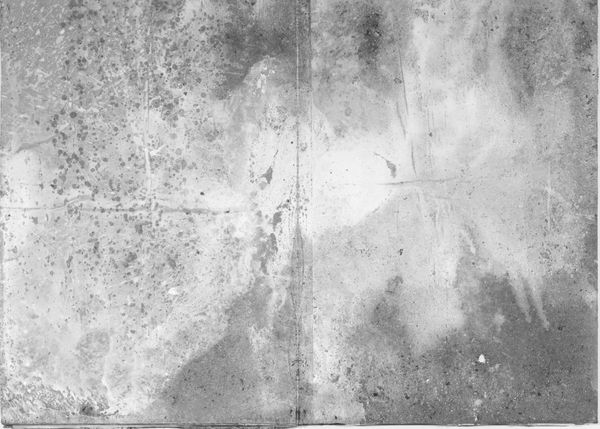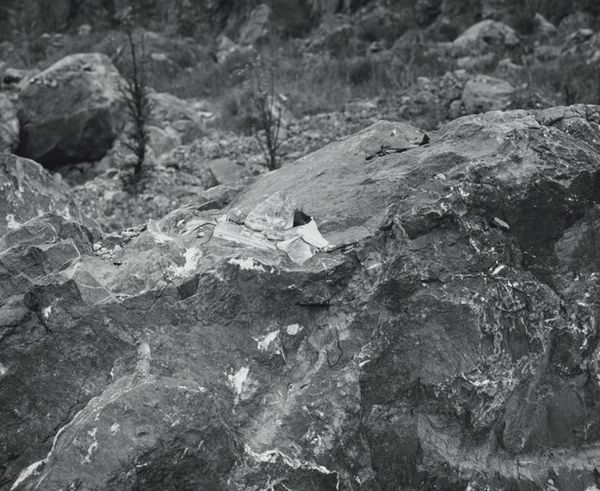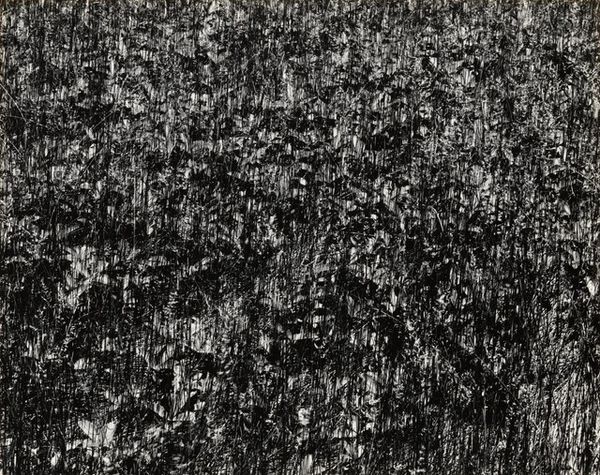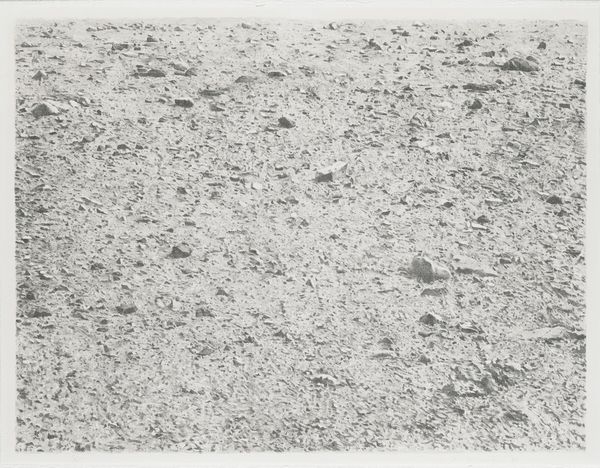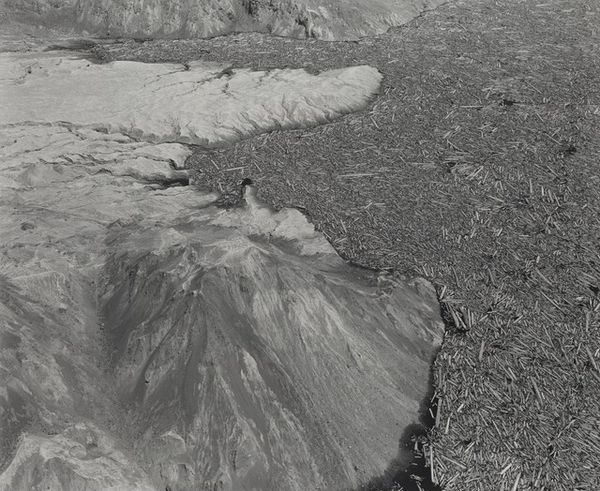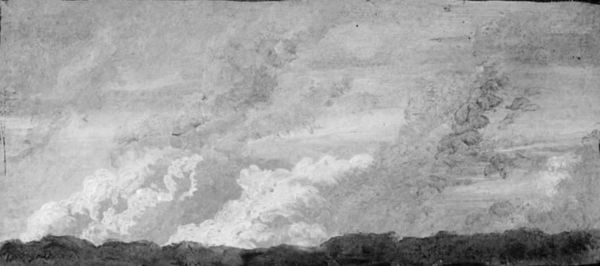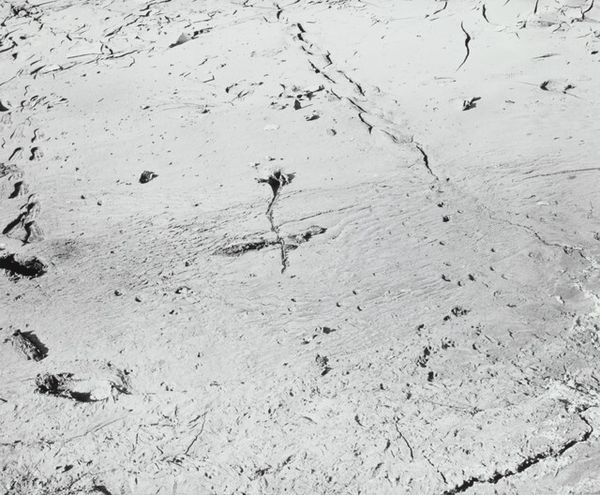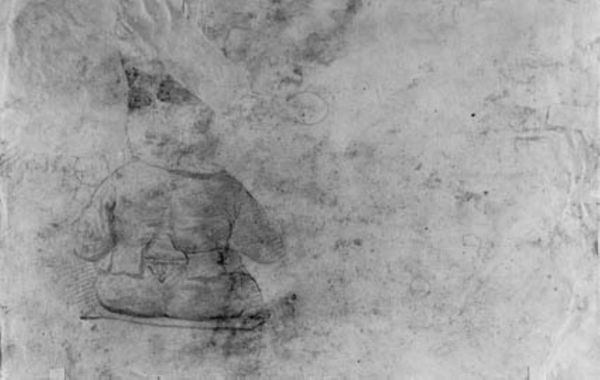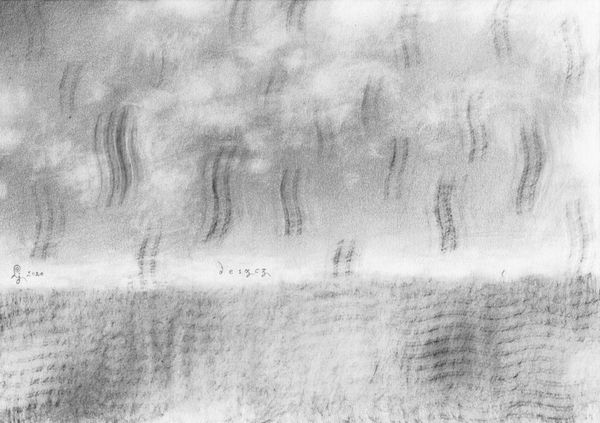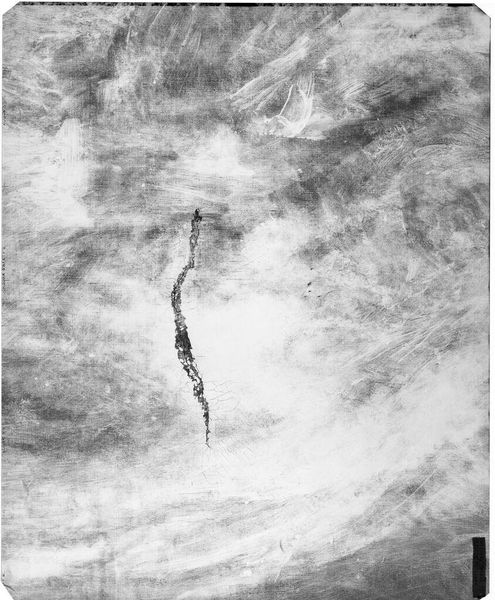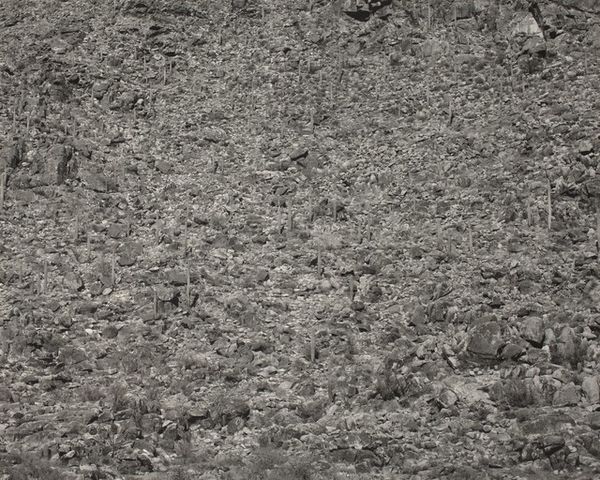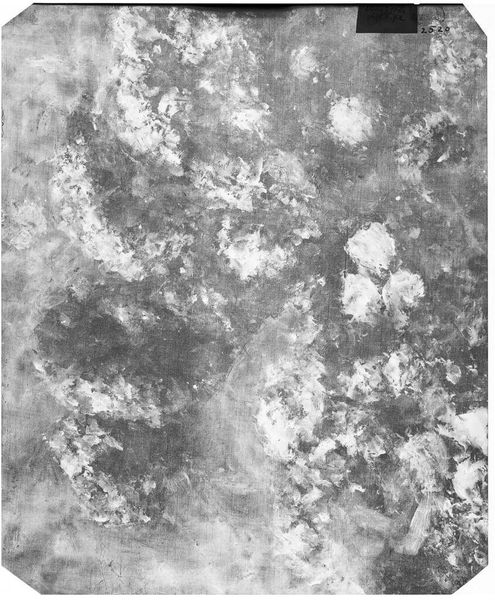
photography
#
still-life-photography
#
organic
#
landscape
#
photography
#
line
#
monochrome
Dimensions: sheet (trimmed to image): 8 x 11.1 cm (3 1/8 x 4 3/8 in.) mat: 27.94 x 35.56 cm (11 x 14 in.)
Copyright: National Gallery of Art: CC0 1.0
Curator: Looking at Harry Callahan’s “Twig in Snow,” captured around 1942, what strikes you most immediately? Editor: The sheer bleakness, the brutal minimalism. It’s mostly white, the field of snow nearly consuming that solitary dark twig. It feels quite desolate, like a frozen wasteland reduced to its essence. Curator: Indeed. Callahan often used photography to distill the world to its essential forms, emphasizing line and texture. I find the social context important here, especially when thinking about the looming Second World War and considering the history of land use. There is an implicit social and political significance to even such small fragments of the landscape. Editor: Absolutely. Beyond its physical starkness, I’m drawn to the symbolism. The twig—it’s a visual shorthand for resilience, the tenacity of life persisting even in the harshest environments. A tiny symbol of hope in the face of annihilation. Perhaps reflecting something of what civilians worldwide were experiencing at that time. Curator: I'm interested in that emotional throughline. I wonder if Callahan’s artistic focus had social roots, a sense of cultural responsibility in representing stark beauty. Did this aesthetic choice of photographing the discarded indicate anything regarding the values of this era? The landscape became a space charged with anxiety but also a space to explore themes around loss. Editor: You make an astute observation. And, think about how winter itself, with its associated dormancy, so often signifies death or, more precisely, transition. But that one thin branch pierces through, unbowed. Consider also the broader iconography of trees and branches in mythology as being a world axis—a bridge between worlds and symbolic support for mankind. Curator: The black and white aesthetic in this shot is crucial. The elimination of color reduces the image to fundamental contrast between survival and demise, offering, for the viewer, the opportunity to confront difficult social narratives of the war without bombarding one's sensibilities. Callahan stripped away the distracting sensory data. Editor: Agreed. And beyond its symbolic resonance, what is depicted seems, simultaneously, highly abstract. A simple shape against the complex fractal geometries of the snow itself. A representation of human presence within our wider ecosystems—but perhaps even on the verge of disappearing. Curator: That makes the picture resonate today, during another period of major disruption in culture and nature, perhaps even more deeply than in Callahan's time. Editor: It leaves me reflecting on the power of the photograph to focus the mind and also connect emotionally across historical contexts.
Comments
No comments
Be the first to comment and join the conversation on the ultimate creative platform.

